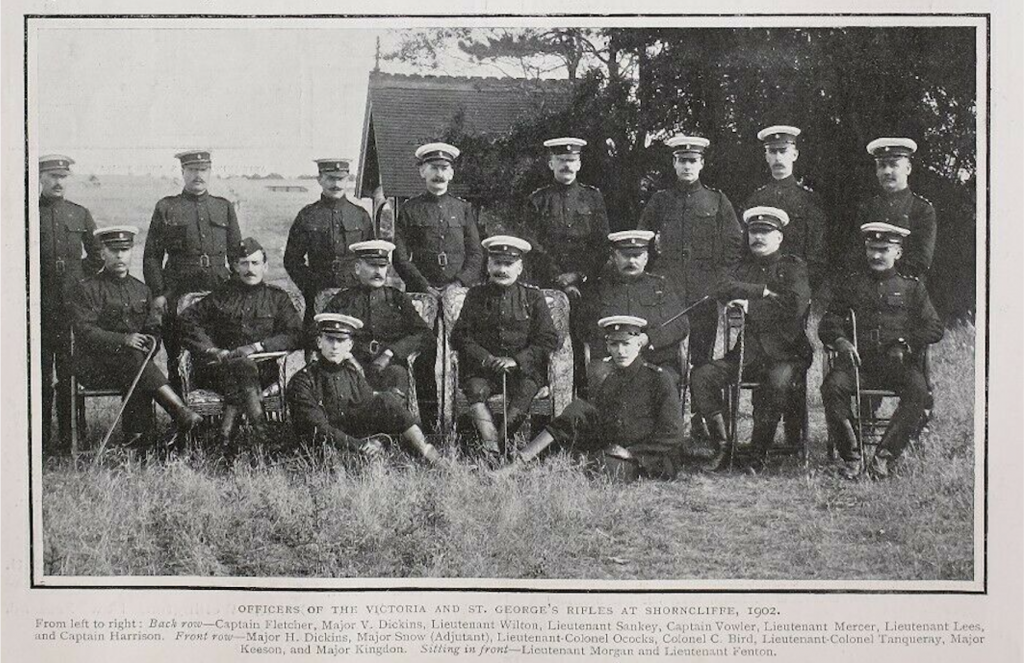This page offers an incomplete and unscientific profile of the uniforms worn by the Regiment over its existence:
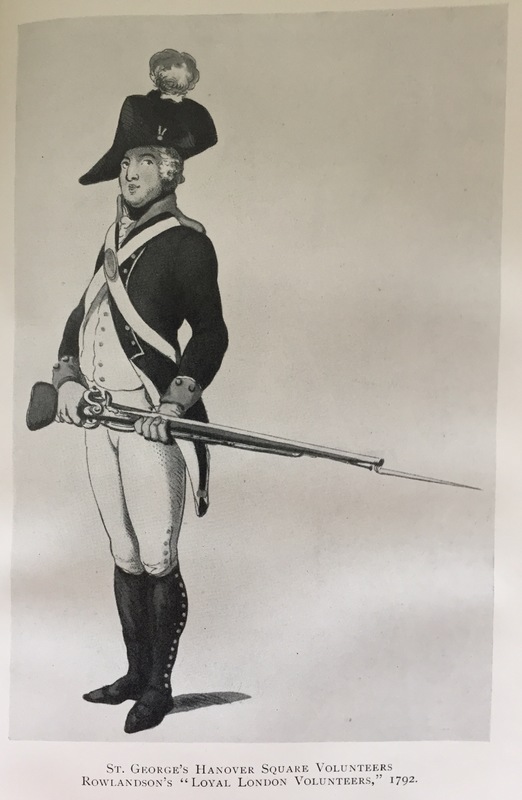
The St George’s Uniform was described as
“blue, long-tailed coats, double-breasted, with bright red facings; cocked hat for battalion company, white breeches, black gaiters up to the knee, with white metal buttons black velvet stocks, leather pigtails, red and white hackle feathers twelve inches long, and bright-barrelled firelocks. The grenadiers wore the bearskin caps, with patch of red cloth behind and white chain ornaments. The Light Infantry Company had leather helmets with a green feather attached.”
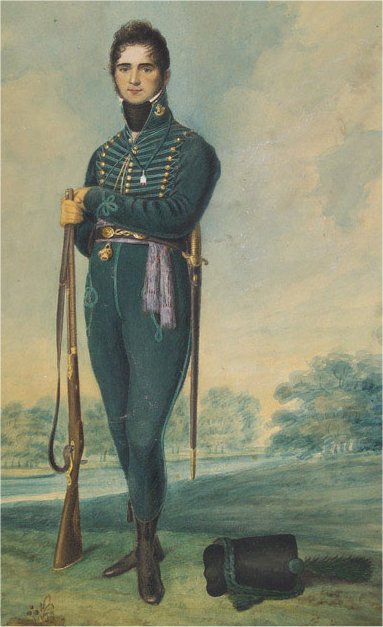
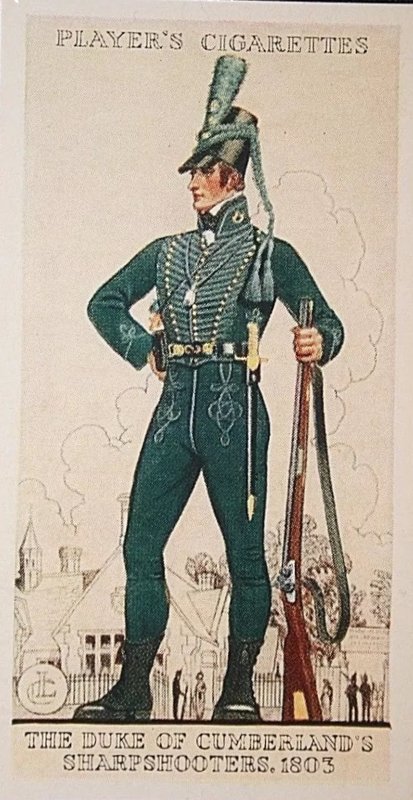
In 1846 the uniform was described as:
Coat
A dark rifle green superfine or second cloth frock coat single breasted, with stand-up collar, black horn buttons embossed with a death’s head, the collar trimmed with black mohair cord to pattern, and the cuffs with narrow braid of the same material; officer’s coats to be trimmed with broad braid, loops and frogs
Trousers
Of superfine or second cloth same colour as the coat trimmed down the sides with black mohair oak-leaf lace, two inches wide.
Scales
The shoulder scales be bronzed, with a small silver gilt bugle in the centre of the crescent ; officer with plated scales, and a gilt bugle in the centre of the crescent.
Shako
Of black beaver, yeoman crown, ten inches across the top, and seven inches from the centre, leather top and and leather V on each side ; mohair cord and tassels, a small death’s head, &c, on a silk rosette in front with a crown, and the letters RVR underneath, all in silver or white metal ; plain black leather fixed peak, bronzed lion’s head, and scales, drooping horse hair plume, with bronzed socket, and plated ring ; the officer’s full dress a green feather plume.
Foraging Cap
Of black oil skin (to stand up), ten inches across the crown, the band to be two inches wide, with a death’s head, etc., in silver or white metal, on the front, black leather fixed peak.
Stock, rifle, sword, pouch, shoulder belt, waist belt, ball bag and powder horn.
In 1850 the uniform of an enlisted Volunteer in the Royal Victoria Rifle Club was illustrated in the picture shown below:
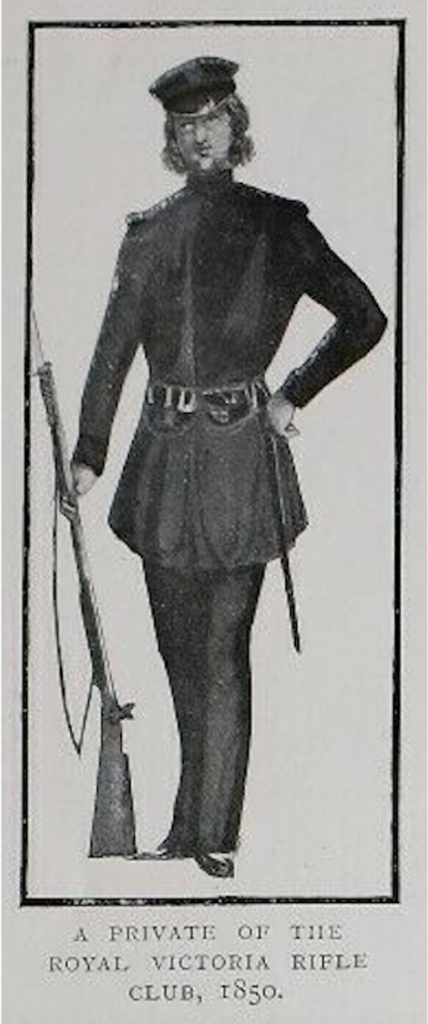
By 1853 the Uniform was described thus:
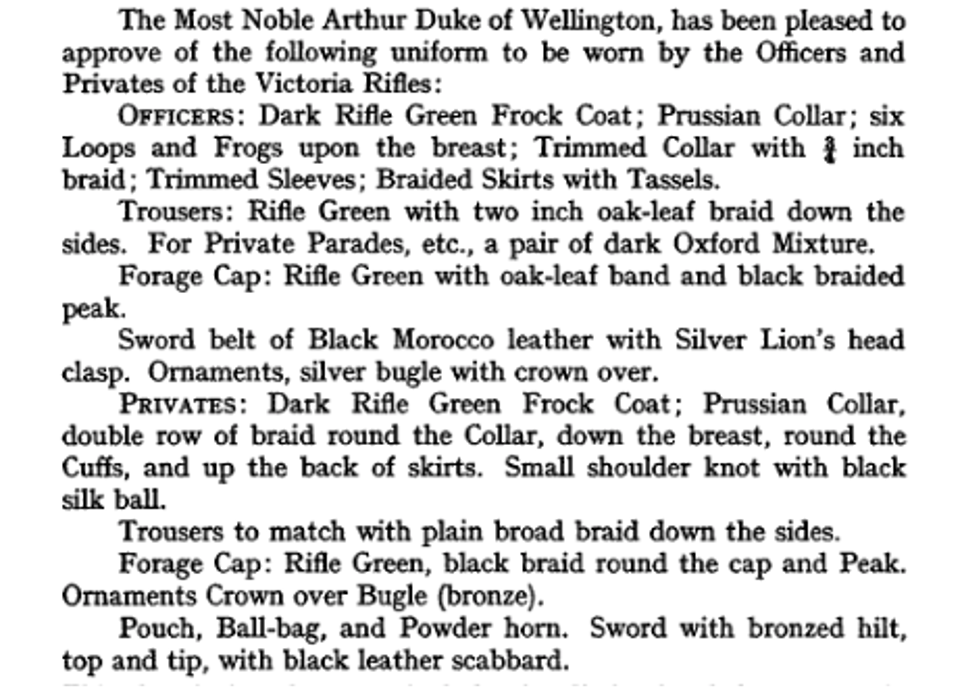
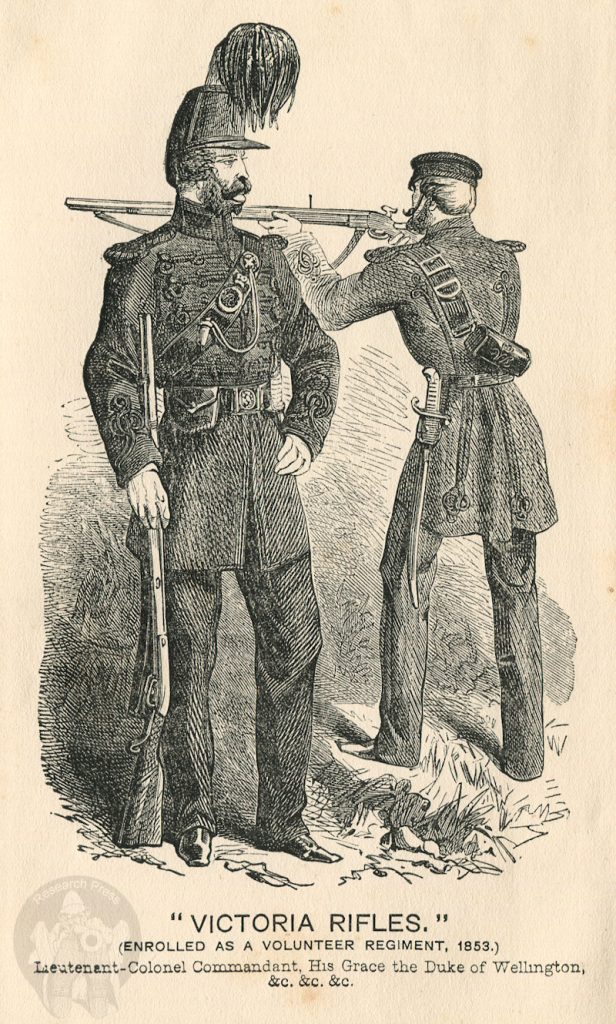
(courtesy of Research Press)
When the Victoria Rifles became formally attached to the King’s Royal Rifle Corps in 1881 they lost their distinctive uniforms and adopted the now familiar Rifle Green with Red Facings. Keeson lamented:
“The gorgeous and expensive uniform of the old Victoria Rifles has been superseded by the neat and serviceable pattern of the KRR.“
The first photograph of the Regiment is in 1864, an albumen print showing the members of the Regiment and their wives:
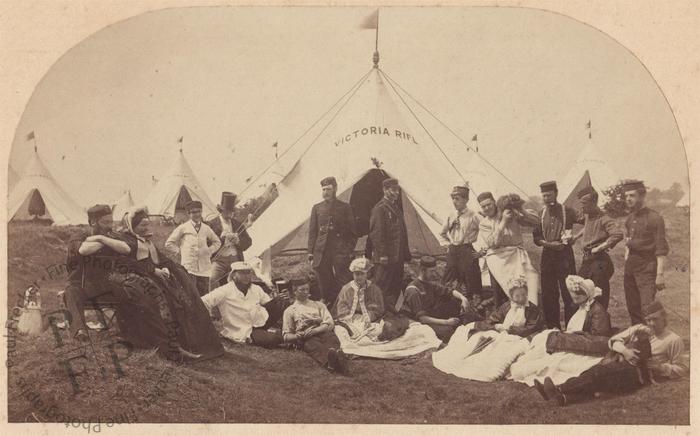
Manuscript addendum noting “Wilson’s tent, Victoria Camp” Source: Paul Frecker Fine Photographs
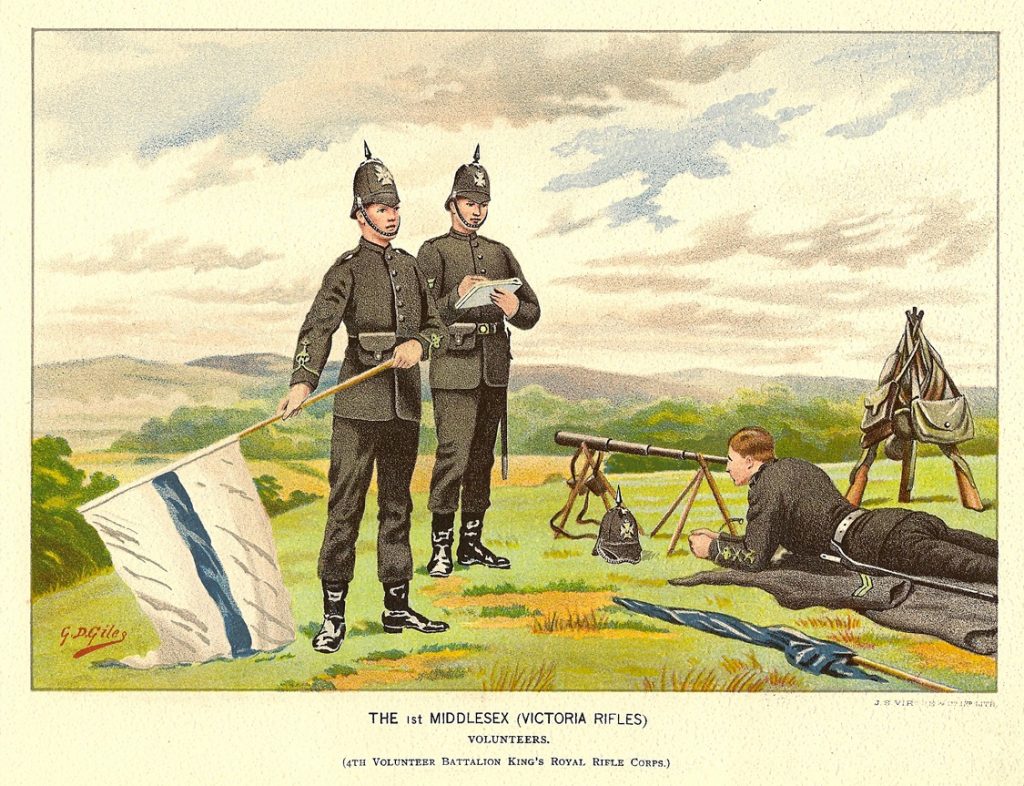
The following image shows a South African War or Boer War era Officers’ Busby of rifle pattern made by Hobson and Sons:
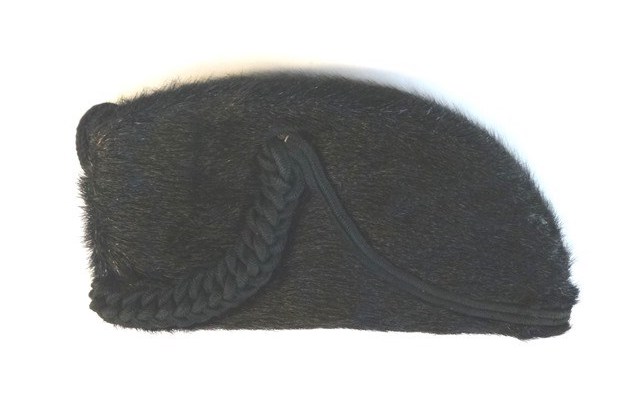
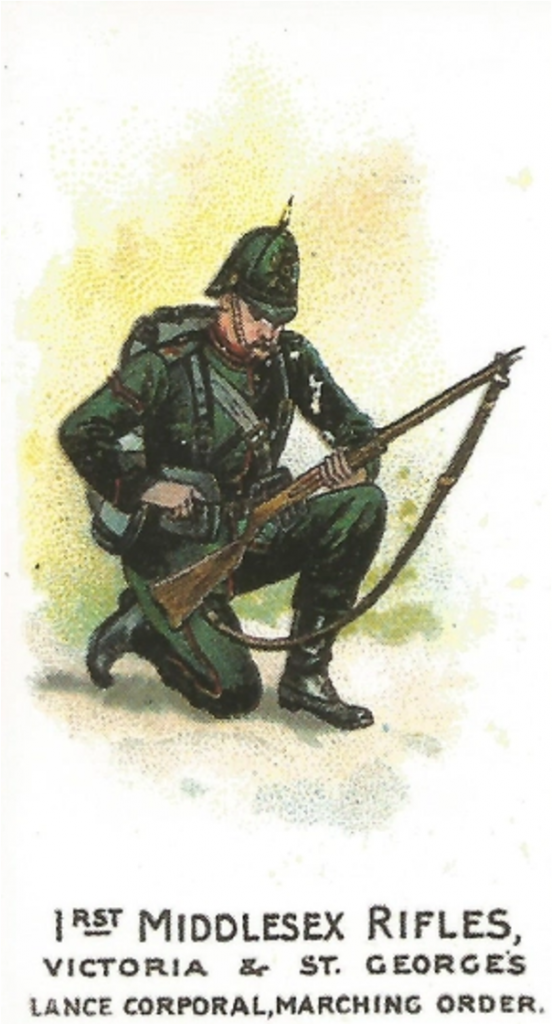
NCO Marching Order
In 1902 the following photographs were taken at Shorncliffe Camp.The first illustrates the different orders of dress then in force for the Regiment whilst the second shows the officers.
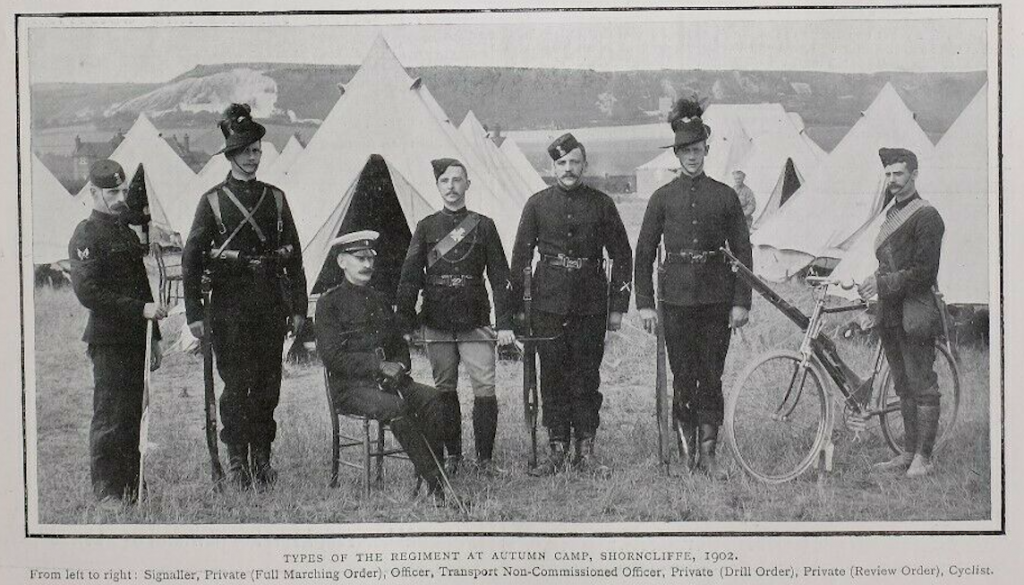
By 1910 the Regiment had become the 9th County of London Regiment. The Walking Out Dress pattern is reproduced below:
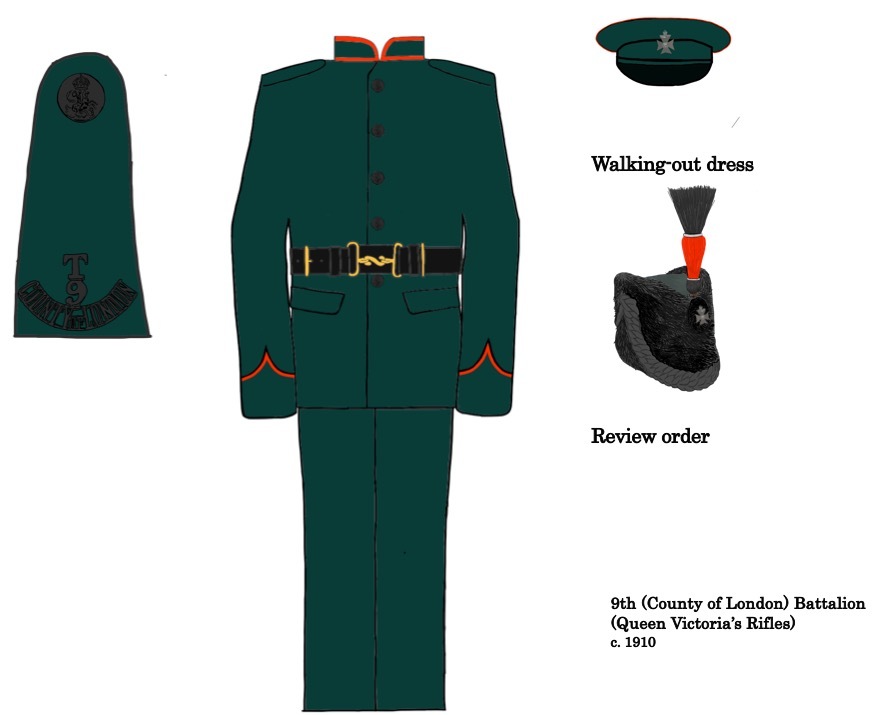
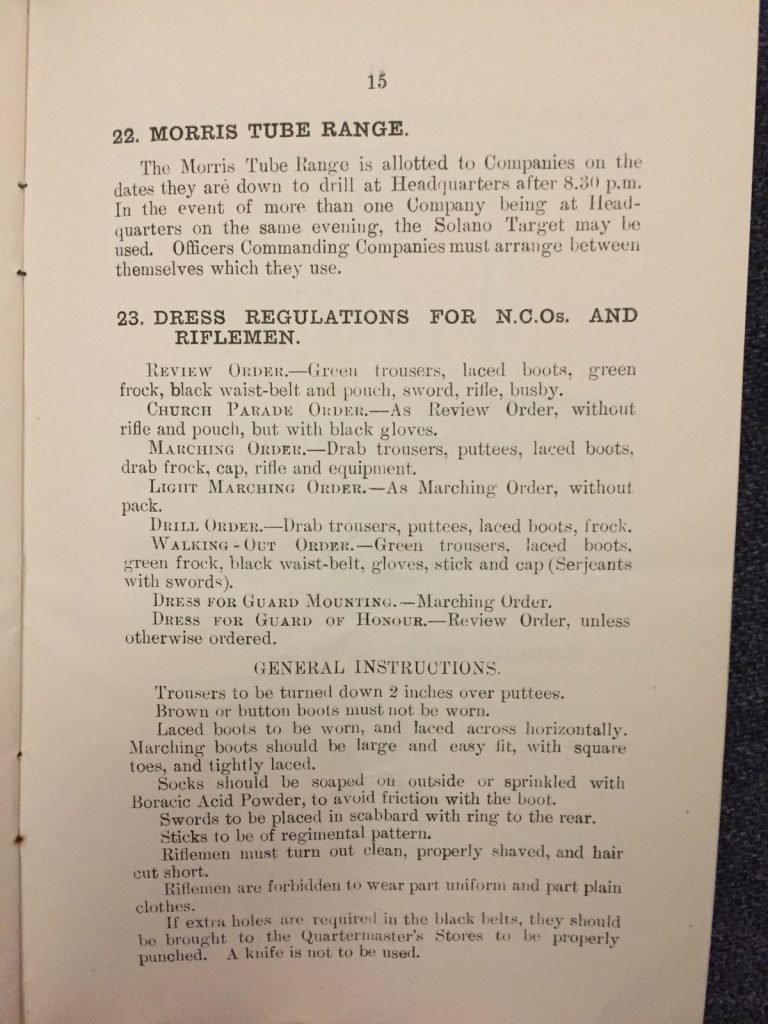
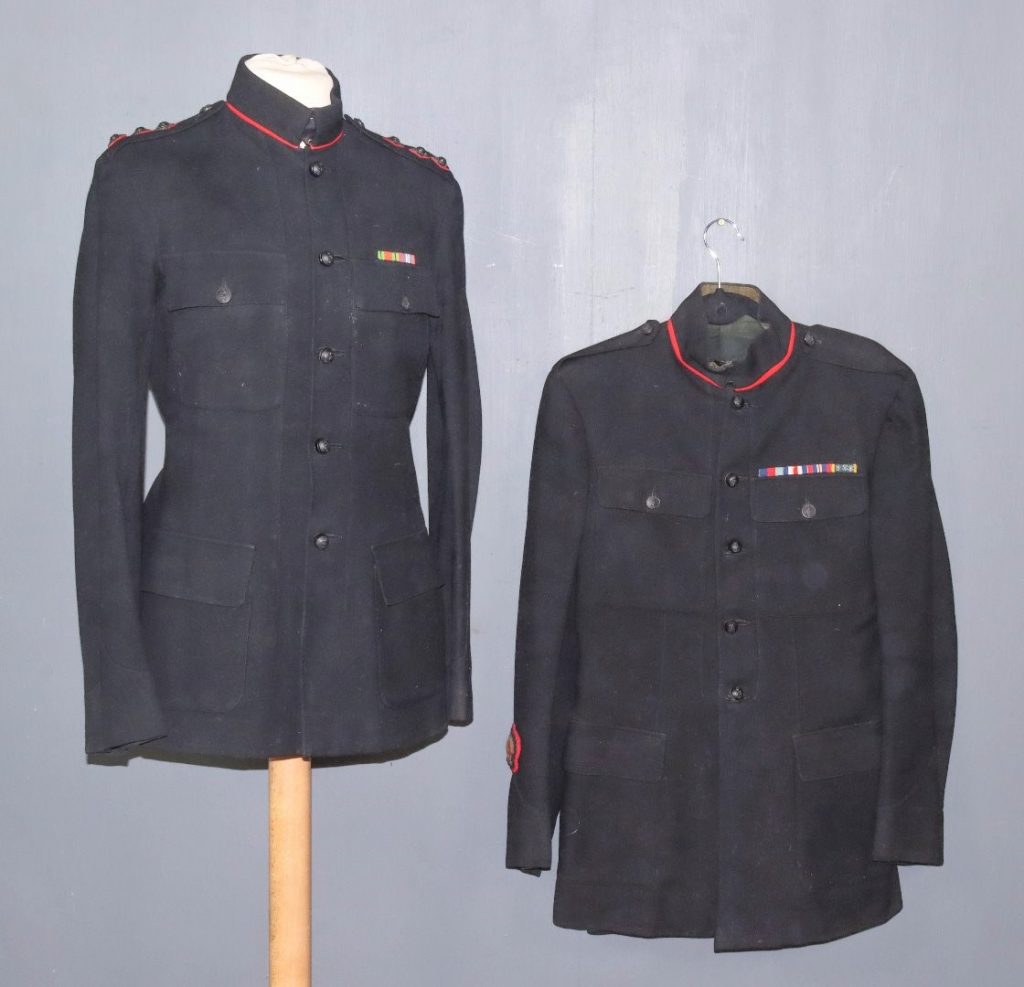
Officer’s Patrol Jacket (Attributed to Lascelles) and a CSM’s Tunic
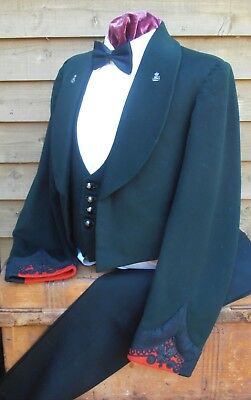
Officers Mess Kit
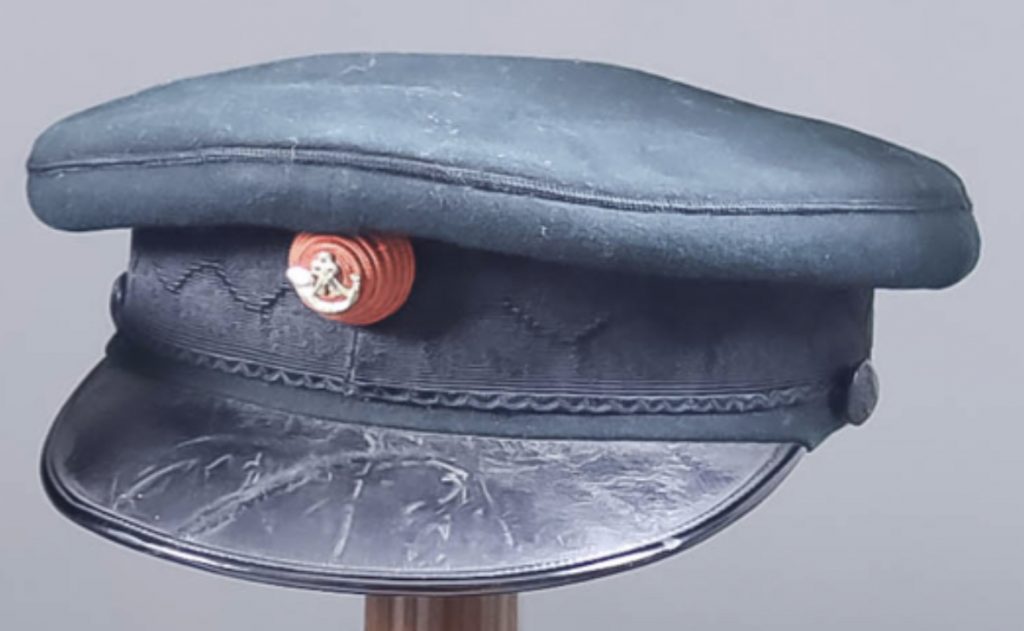
(in poor condition!)
